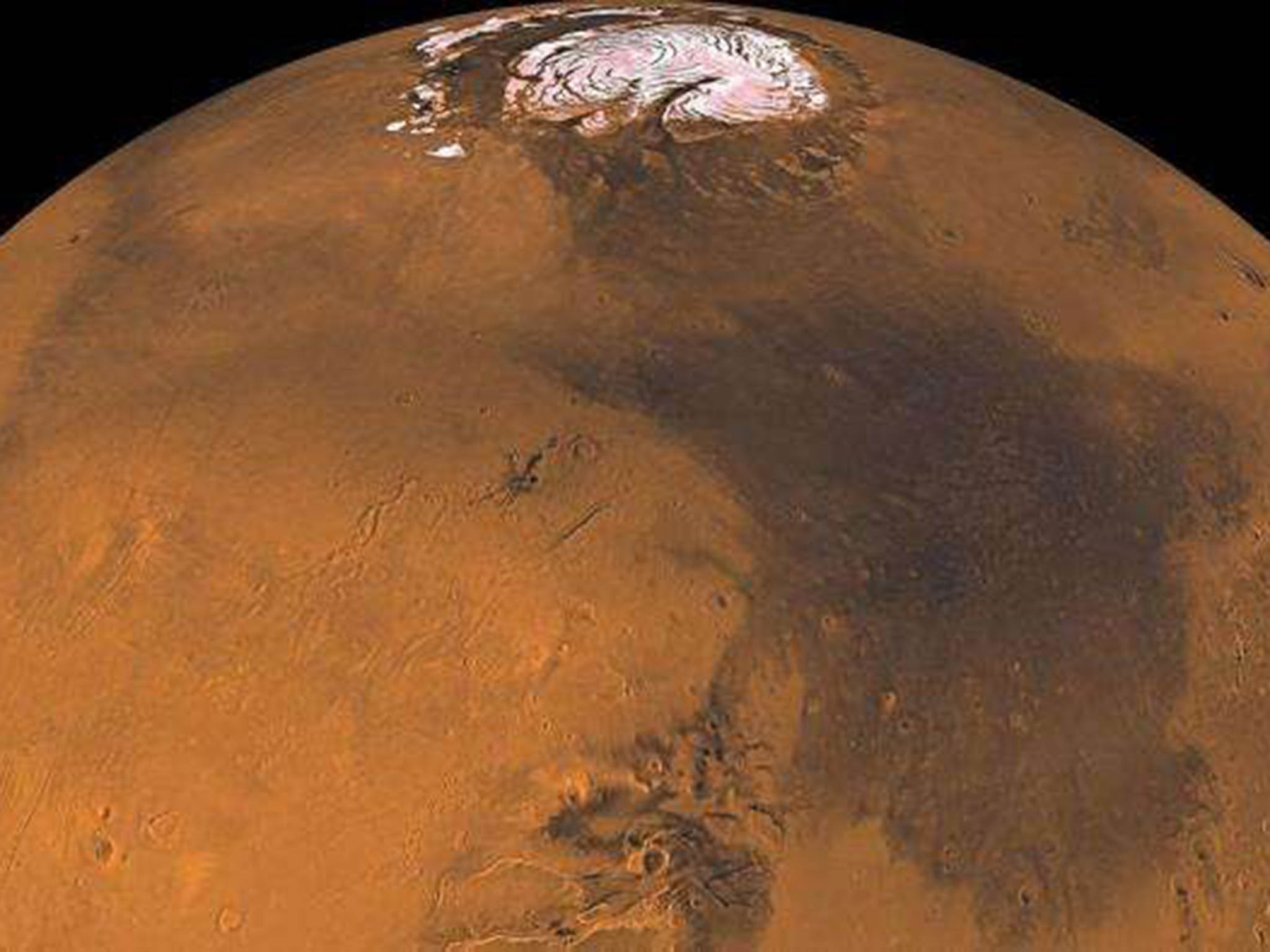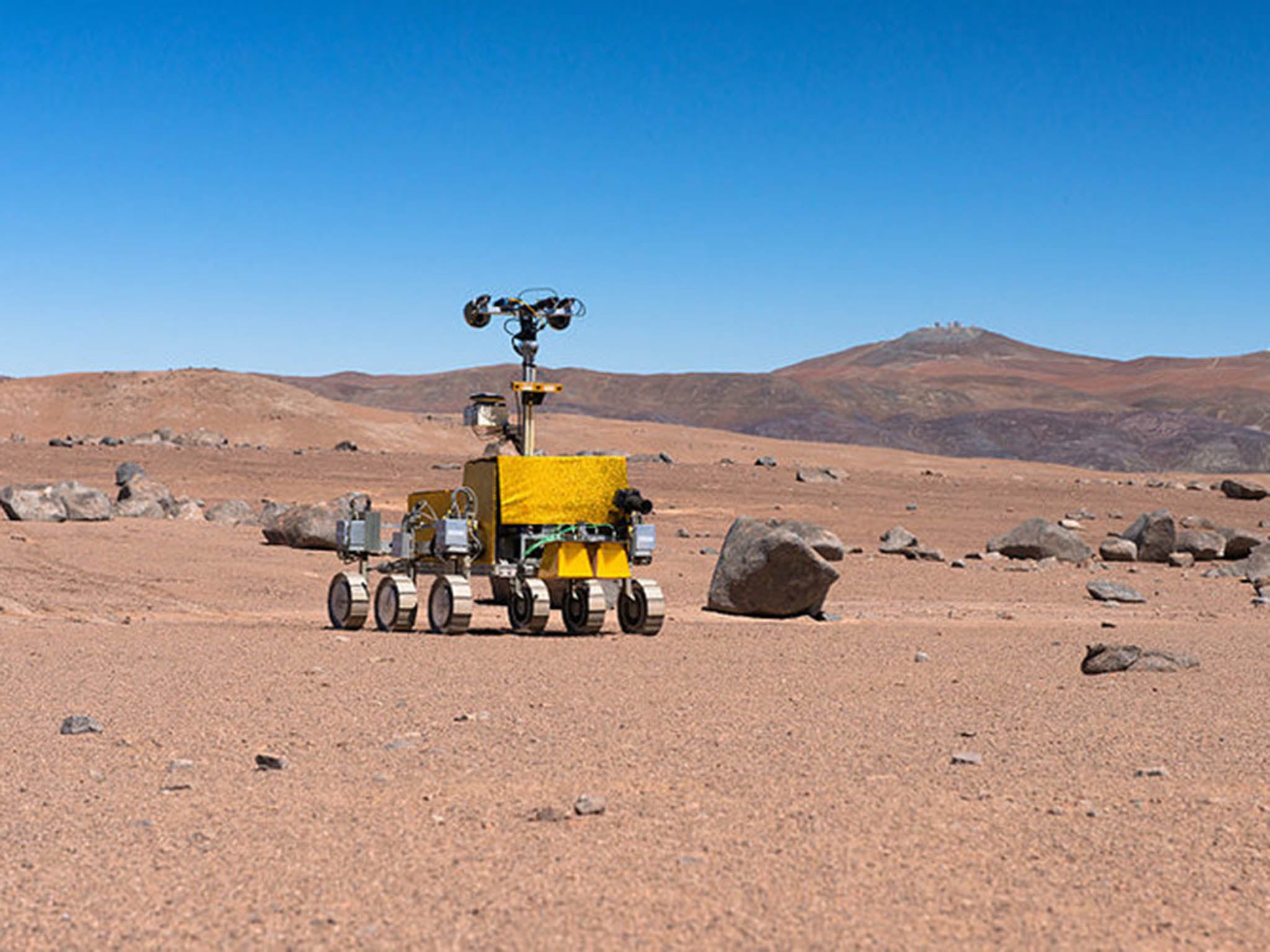Decades of attempts show how hard it is to land on Mars – here’s how we plan to succeed in 2021
Funding has been agreed for ESA's ExoMars rover, giving new hope that Europe could find life on Mars

Your support helps us to tell the story
From reproductive rights to climate change to Big Tech, The Independent is on the ground when the story is developing. Whether it's investigating the financials of Elon Musk's pro-Trump PAC or producing our latest documentary, 'The A Word', which shines a light on the American women fighting for reproductive rights, we know how important it is to parse out the facts from the messaging.
At such a critical moment in US history, we need reporters on the ground. Your donation allows us to keep sending journalists to speak to both sides of the story.
The Independent is trusted by Americans across the entire political spectrum. And unlike many other quality news outlets, we choose not to lock Americans out of our reporting and analysis with paywalls. We believe quality journalism should be available to everyone, paid for by those who can afford it.
Your support makes all the difference.Europe has been trying to land on Mars since 2003, but none of the attempts have gone to plan. A couple of months ago, the ExoMars Schiaparelli landing demonstrator crashed onto the planet’s surface, losing contact with its mothership. However, the mission was partially successful, providing information that will enable Europe and Russia to land its ExoMars rover on the Red Planet in 2021.
Now European research ministers have finally agreed to give the mission the outstanding €400m it needs to go ahead. A lot is at stake as it is intended that the rover will drill under the harsh Martian surface to search for signs of past, or even present, life. With the best of human endeavour, we must learn, try again and not give up. As leader of the international Panoramic Camera team on the rover, which will, among other things, provide surface geological and atmospheric context for the mission, I am one of many scientists working very hard to make it works.
PanCam is one of nine state-of-the-art instruments which will help us analyse subsurface samples.
The reason it is so hard to land on Mars is that the atmospheric pressure is low, less than one per cent of Earth’s surface pressure. This means that any probe will descend very rapidly to the surface, and must be slowed. What’s more, the landing has to be done autonomously as the light travel time from Earth is three to 22 minutes. This delay in transmission means we can’t steer the process from Earth. Nasa and Russia have had their own problems with landings in the past, before the spectacular successes with the US missions Viking, Pathfinder, Spirit, Opportunity, Phoenix and Curiosity.
Lessons learned
Europe’s first attempt to land on Mars was with Beagle 2 on Christmas Day 2003. Until recently, the last we had seen of the lander was on 19 December 2003 – imaged soon after separation from the Mars Express mothership. Mars Express itself was a huge success, entering orbit on 25 December that year and operating ever since. It has revolutionised our knowledge of Mars with stereo images, mineral mapping, studies of plasma escape from the planet’s atmosphere and the first detection of methane.

Recently, the Beagle 2 lander was imaged by Nasa’s Mars Reconnaissance Orbiter on the surface – tantalisingly close to success, with only one of the four solar panels left undeployed. Unfortunately, the communications antenna was underneath that vital panel, preventing communications with Mars Express and Earth. Beagle 2 probably operated for a day or two at least, and may have taken its first panorama with our stereo camera system and its pop-up mirror.
Then, on 19 October this year, Schiaparelli tried to land. Using lessons learned from Beagle, detailed data were transmitted during the descent, after separation from the ExoMars Trace Gas Orbiter mothership. The early parts were successful – we know that the heat-protective tiles did their job during entry into the thin Mars atmosphere, and that the parachute deployed as planned.
But then, an unexpected spinning motion was detected for unknown reasons, the parachute was ejected early and the retro rockets were fired briefly. Despite altimeter and speed measurements, the onboard control computer became confused (saturated) over a second-long period and thought Schiaparelli had reached the surface already. Unfortunately, the craft was still 3.7km high, the retro rockets shut off early and Schiaparelli fell to the surface – impacting at over 300km/h. More lessons learned, the hard way. As the controllers now know exactly what went wrong, they are using the transmitted data to determine why and figure out how to avoid it happening again.
Meanwhile, the Trace Gas Orbiter successfully entered Mars orbit. Last week it sent the first images and data from its first close Mars encounter. Its final orbit will be a 400km circular orbit to be achieved in March 2018. This will involve a tricky, fuel-free braking process called “aerobraking” (which involves dragging the spacecraft through the top of the atmosphere in order to use the friction from the gas molecules to slow it down).
The spacecraft’s mission is to find out more about the surprising trace gases, including the methane. Methane should not be present in Mars’ atmosphere, as it is broken up by sunlight in tens to hundreds of years, so there must be a source of it there now. The possible options are both exciting – it could either be geothermal activity or microbial lifeforms.
Searching for life
The rover itself is the jewel in the crown of the ExoMars programme, planned for launch in 2020 and arriving in 2021. There are similarities and differences with earlier landing systems, which will again use lessons learned from earlier missions.

The rover has a unique drill which will collect samples from up to two metres underneath the harsh Martian surface. This is 40 times deeper than anything else planned – the Curiosity rover can only drill five centimetres. This is below where ultraviolet light and other radiation from our sun and galaxy – which is harmful to life – can reach. It is the most likely of any planned mission to finally answer the question of whether there was, or even is, life on Mars.
The possible landing sites have been narrowed down by engineering constraints but from a number of possibilities three now remain – Oxia Planum, Mawrth Valles and Aram Dorsum. At the first two of these, data from orbit shows signs of water-rich clays (phyllosilicates), and the last one includes an ancient channel and sedimentary deposits – signs of past water erosion. The options will be narrowed down further in the next few months.
The mission is one of the most exciting in the search for life beyond Earth. Along with Jupiter’s moon Europa and Saturn’s satellite Enceladus, Mars is one of the top locations to look at. Moreover, the hardware development progress is good, with industry and academia pushing the frontiers of technology, pursuing the international teamwork needed to build and operate the mission, and learning how to work in super-clean rooms to avoid contaminating Mars with terrestrial spores.
We learn from the past and plan for the future. Space exploration is hard, particularly at Mars, and we must never give up. The ExoMars rover mission will play a key part internationally in Mars exploration, and using the lessons from the past we are poised to find the answer to one of mankind’s most important questions – are we alone in the universe? Our rover might just find the answer.
This article first appeared on The Conversation (theconversation.com). Andrew Coates is a professor of physics, deputy director (solar system) at the mullard space science laboratory, at UCL
Join our commenting forum
Join thought-provoking conversations, follow other Independent readers and see their replies
Comments